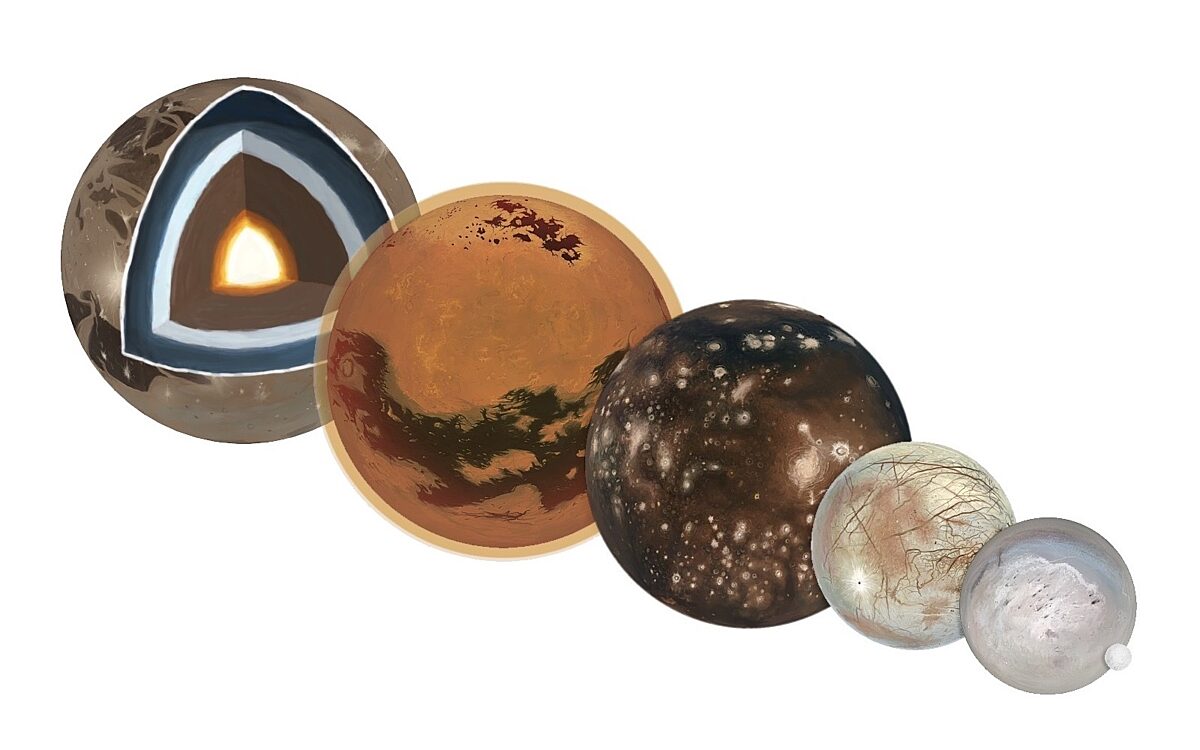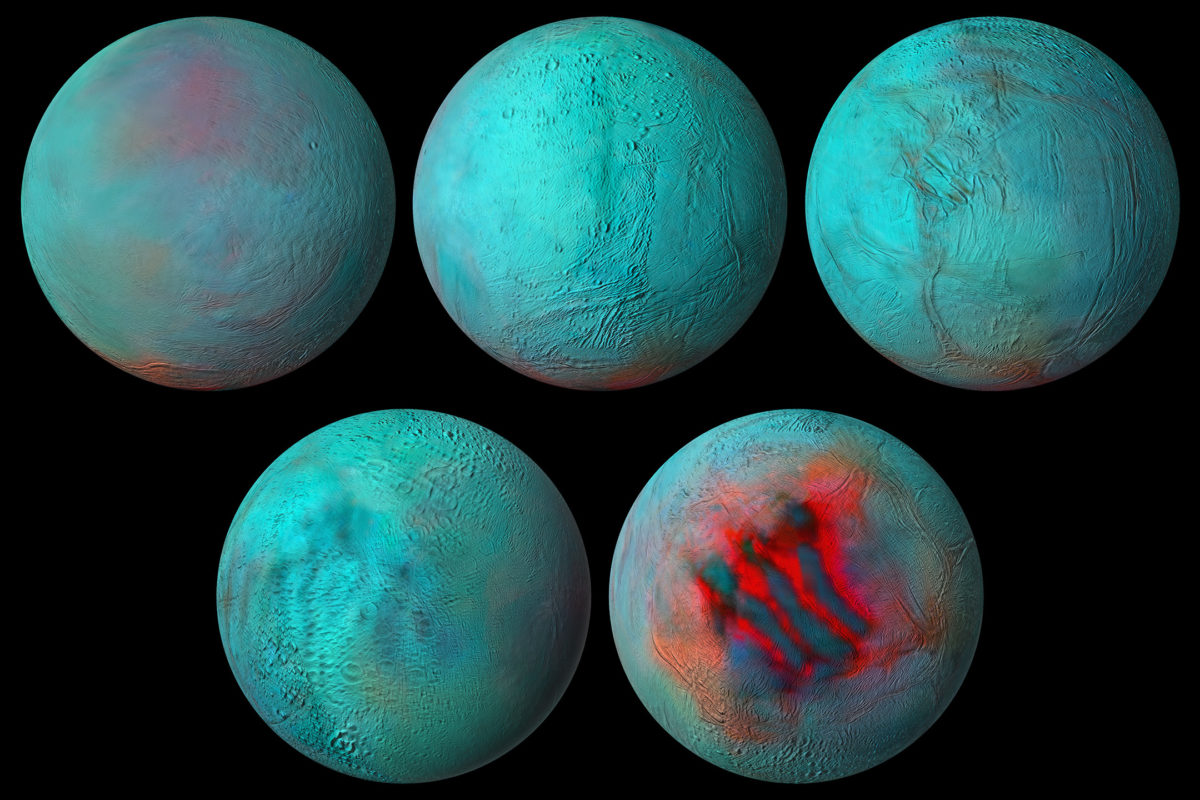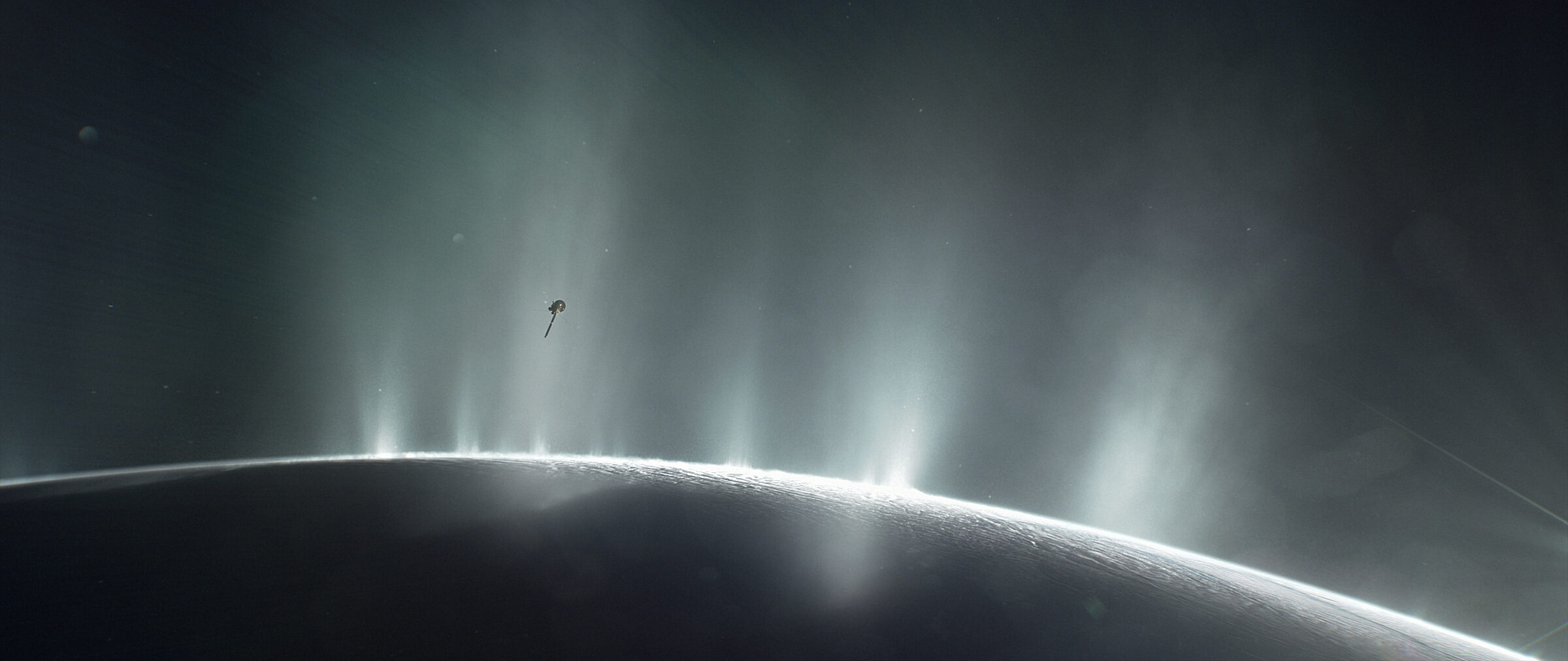Jatan Mehta • Apr 14, 2022
When will we explore Enceladus to find alien life?
Saturn’s small icy moon Enceladus captured the imaginations of people worldwide when NASA’s Cassini spacecraft saw it spewing plumes of water into space. This water comes from a global, liquid ocean concealed beneath Enceladus’ fissured crust. The water isn’t liquid because of the Sun’s heat but rather because of warming caused by friction between parts of the moon's interior as it is tugged by Saturn's gravity.
When Cassini flew through Enceladus’ plumes between 2008 to 2015, its mass spectrometer found a variety of organic molecules — building blocks of life — as well as molecular hydrogen, carbon dioxide, methane and rock fragments likely coming from the moon’s ocean.
Cassini’s observations suggest that Enceladus’ ocean seems to have potentially habitable hydrothermal vents similar to those found in the deepest, darkest parts of Earth’s oceans. Not only do various microorganisms like methanogens thrive near such terrestrial vents void of sunlight, scientists think it’s how life on Earth could’ve started in the first place. Extensive simulations support such microorganisms hypothetically surviving on ocean floors of Enceladus too.
The chance to sample and study potential fragments of life in Enceladus’ tantalizing plumes beg for a return to the Saturnian moon.
Enceladus changes our approach to life
Enceladus is part of a class of icy worlds in the outer solar system which likely have underground oceans. These worlds — including Jupiter’s moon Europa and Neptune’s moon Triton — suggest that sunlight, a surface and an atmosphere aren't necessary to make a world habitable.
Finding life in any of these alien oceans of our solar systems would be a game-changer, perhaps even more so than detecting intelligent life in a more distant star system. That’s because if life formed and survived independently in our solar system on two completely different worlds, it boosts the idea that the universe is teeming with life. The active water plumes of Enceladus provide an unprecedented opportunity to find out our universe’s potential for life and how it may exist outside Earth. And yet it’s not the only thing scientists find intriguing about Enceladus.

How did Enceladus form?
Microbial life isn’t the only explanation for organic molecules and high methane levels in Enceladus’ plumes, even if it may be the most likely one.
If comets bombarded Enceladus during its formation, the moon could have gotten methane and/or organic molecules from them directly. Methane in Enceladus’ interior could leak via outgassing, and organics in its heated core could decompose to release hydrogen, carbon dioxide and methane.

Sending missions to find out how Enceladus formed would tell us if its ocean is habitable yet uninhabited, or teeming with microbial life. It would also lend insights into the conditions that existed during the formation and evolution of our solar system’s outer worlds. Since Earth’s water and possibly even organic material are thought to have been deposited by comets and/or asteroids hurtling in from the outer solar system around 4 billion years ago, learning about the outer solar system’s formation and evolution is vital to understanding our own planet's.
Future missions to Enceladus
Some of the biggest planetary science missions launching this decade —like ESA’s JUICE spacecraft and NASA’s Europa Clipper — are dedicated to finding if the underground oceans of Jupiter’s icy moons are habitable. NASA is launching the Dragonfly mission later in the decade to explore the surface of Titan in the hopes of understanding possible starting ingredients for life on early Earth and elsewhere. However, no space agency is currently funding a mission to Enceladus.
Many Cassini mission scientists have endorsed the idea of an Enceladus follow-up mission. They argue that the ability to sample an icy moon’s underground ocean via its plumes without having to drill or dig makes Enceladus the most accessible place to find life in the outer solar system. To that end, scientists have proposed several Cassini-successor missions such as the Enceladus Life Finder and Tiger. They would fly by Enceladus while orbiting Saturn but with much more powerful mass spectrometers than Cassini's to look for larger organic molecules and better biomarkers of life in the moon’s plumes.

Sending a spacecraft to orbit Enceladus itself would be even better, because it would fly through the plumes more frequently and detect more material. More importantly, an Enceladus orbiter could fly at lower altitudes and detect larger, intact particles not lifted high up in the plumes, giving us a better chance of detecting molecular fragments of any microbes.
A spacecraft landing near a plume source could double down on these advantages while also imaging the surface up close and using geophysical instruments like seismometers to study the moon’s interior. Spacecraft measuring carbon and nitrogen isotopes — different subatomic forms of the same element — in the plumes would also tell us Enceladus’ composition and help determine the moon’s origin.
With these goals in mind, scientists recently pitched a hybrid flagship mission to NASA called the Orbilander, which would first orbit Enceladus and then land on it. Its complex of instruments would specifically look for chemicals conducive to life as we know it, such as amino acids, lipids and even cells. However, even if the mission is selected, Orbilander wouldn't launch until 2038.
Another ambitious but very early phase mission concept is SWIM, which envisions deploying a swarm of robotic micro-swimmers into Enceladus’ ocean to directly study its composition and environment.

Even if NASA isn’t planning a mission to Enceladus anytime soon, studies on Earth and telescopic observations are shaping our understanding of moons like Enceladus. The JWST infrared telescope might remotely observe Enceladus’ plumes and potentially identify non-biological sources of methane to help constrain the moon’s habitability. Research on possibly intact molecular fragments in the plumes belonging to any microbes is being used to study archived Cassini data, refine development of future instruments, and inform what upcoming icy moon missions like JUICE and Europa Clipper should specifically look for.
NASA has increased investments in the last decade to build landing technologies and advanced instruments to study ice-concealed habitable ocean worlds and find life within them. Here’s hoping that inspires a return to Enceladus.
The Time is Now.
As a Planetary Defender, you’re part of our mission to decrease the risk of Earth being hit by an asteroid or comet.
Donate Today

 Explore Worlds
Explore Worlds Find Life
Find Life Defend Earth
Defend Earth

